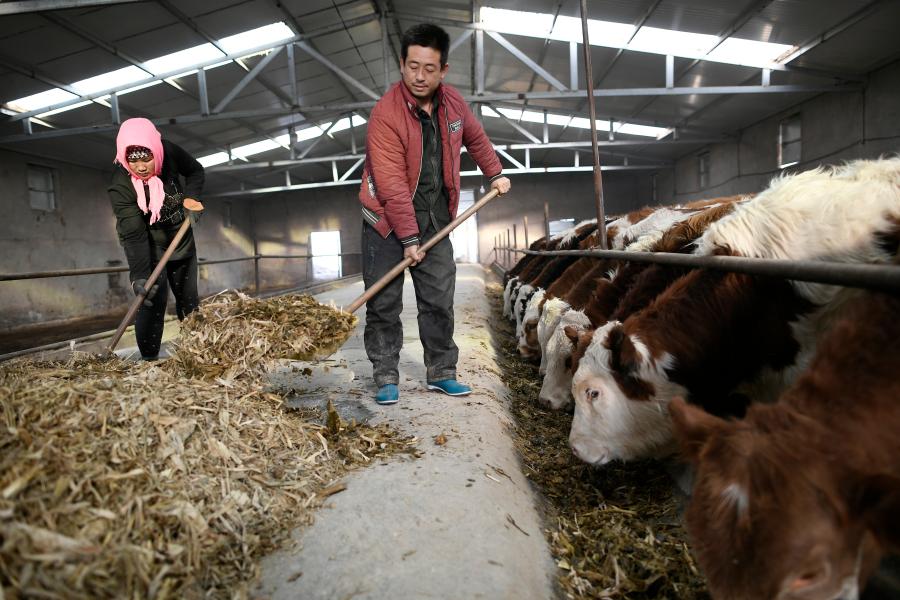Changes in most uninhabitable area: Understanding China's fight against poverty
Xihaigu was labeled the "most unfit place for human settlement" by the United Nations in the 1970s. Xihaigu's triumph over destitution, after reeling under poverty for centuries and carrying the tag of the most uninhabitable area on earth, offers a window into China's achievements in its war against poverty.
MICROFINANCING INSPIRES FARMERS
For years, poor people in Xihaigu had little to mortgage for loans. Thirteen years ago, 80 percent of villagers of Caichuan lived in caves carved out of the mountainside.
"Though they are good at raising cattle and sheep, and have land to grow corns and forage grass, many villagers had no money to buy calves, build bullpens or silage pools. There were only 170 cattle in the village in 2007 that were for farming," said Ma Jinguo, then director of the village committee.
The Ningxia branch of the Postal Savings Bank of China began a loan scheme on a trial run in 2008 and Caichuan was chosen as a pilot area.
"Each loan applicant was paired up with two other families, who were financially sound or were village cadres, as the applicant's guarantors. Initially, only 14 families applied and each family was granted 5,000 to 20,000 yuan for a credit period of one year," Ma said.
Yang Zongren, 36, was one of the first to receive the loan. He bought two cows with the money and earned 3,000 yuan after paying back the debt the next year.
"I have had good returns from breeding the cows, and life has eased up," he said.
Seeing the results of the pilot scheme, other villagers showed a willingness to join the program. As the number of loan applicants grew, a cattle-raising cooperative was established, which used a communal fund to offset risks of default, and supported farmers to raise cows by helping with the selection of cow breeds, husbandry techniques and sales.

Villager Ma Guocai (R) and his wife Ma Ting feed cows at a cow-raising cooperative in Hantianling Village of Hexi Township, Tongxin County, Wuzhong City of northwest China's Ningxia Hui Autonomous Region, Dec. 21, 2017. [Photo/Xinhua]
Caichuan is no longer poverty-stricken. This year, villagers were given loans worth 26 million yuan. They raised 5,500 cattle and 12,000 sheep, and their per-capita annual disposable income increased to 12,000 yuan from 2,000 yuan in 2008.
It is a consensus among Caichuan dwellers to maintain creditworthiness, as the bank has a three-level individual rating -- A, B and C. A whopping 80 percent of the villagers have earned A rating, and there was not a single bad loan over the years.
The microfinance program has been rolled out in other regions across Ningxia. From 2016 to 2019, the annual growth of poverty-relief micro-financing came in at 3 billion yuan every year.
"The loan scheme empowered poor farmers, encouraged them to work, and also helped build an industrial chain. We hope our experience can be of some value to other poor areas that are striving to eradicate poverty," said Fang Zhenglun, director of Yuanzhou District, Guyuan City.

